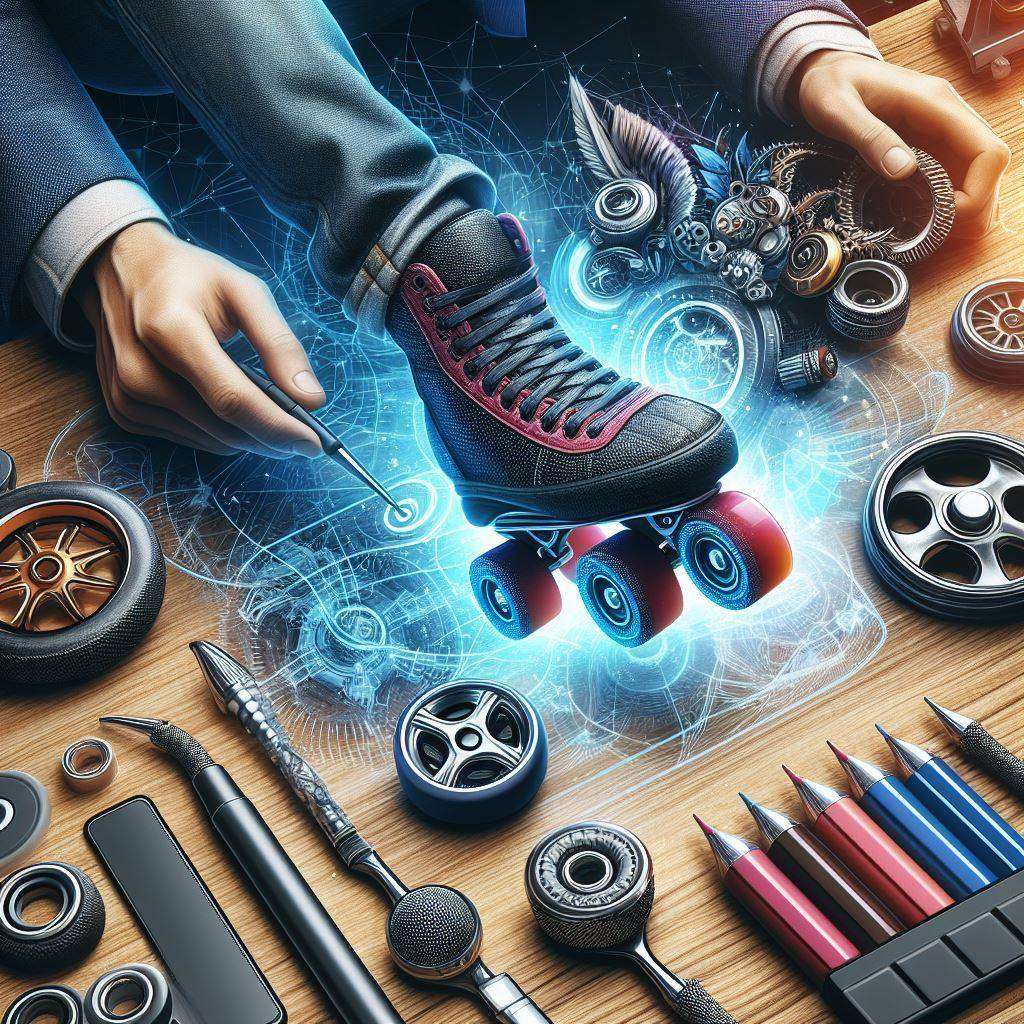Table Of Contents
Introduction
Choosing the right inline skate wheels is crucial for optimizing your skating performance, comfort, and safety. This guide aims to help you understand the intricacies of in-line skate wheels, making informed choices, and maintaining them properly to ensure the best skating experience possible.
Key Takeaways
- Understand Wheel Components: Knowing the anatomy of in-line skate wheels (core, urethane, bearings, and spacers) is crucial for making informed choices.
- Select Wheels Based on Skating Style and Surface:
- Recreational skaters should look for medium-sized, medium-hardness wheels.
- Speed skaters benefit from larger, harder wheels.
- Aggressive skaters need smaller, durable wheels.
- Choose wheel hardness according to the skating surface (softer for outdoor, harder for indoor).
- Wheel Size Affects Performance: Larger wheels are faster but offer less manoeuvrability, while smaller wheels provide quicker acceleration and better control.
- Maintenance Extends Wheel Life: Regular cleaning, bearing maintenance, and wheel rotation can significantly prolong the lifespan of your wheels.
- Bearings Play a Key Role: Investing in high-quality bearings can enhance wheel performance, offering smoother and faster rides.
- Consider Wheel Configuration: Experiment with standard and hi-lo setups to find the configuration that best suits your skating style and objectives.
- Stay Informed on Innovations: The in-line skate wheel industry is continually evolving, with new technologies aimed at improving performance and sustainability. Keep an eye on the latest developments.
- Eco-Friendly Choices Matter: As the industry moves towards more sustainable practices, consider supporting brands that prioritize eco-friendly manufacturing processes.
80Six Dual Certified Kids Bike, Scooter, and Skateboard Helmet, Designed by Industry Leading Brand Triple 8
(as of 07/25/2024 14:17 GMT +01:00 - More infoProduct prices and availability are accurate as of the date/time indicated and are subject to change. Any price and availability information displayed on [relevant Amazon Site(s), as applicable] at the time of purchase will apply to the purchase of this product.)Understanding Inline Skate Wheels
The Anatomy of Inline Skate Wheels
In-line skate wheels consist of four main components:
- Core: The hard, inner part of the wheel that connects to the axle. It affects the wheel’s overall weight and how it responds to stress.
- Urethane: The outer material that contacts the ground. Its formulation determines grip, speed, and durability.
- Bearings: Located inside the core, bearings enable the wheel to rotate on the axle. Their quality affects speed and smoothness.
- Spacers: Small cylinders that fit between bearings, maintaining their alignment and distributing load evenly.
Types of Inline Skate Wheels
- Recreational: Designed for comfort and stability, perfect for beginners and casual skaters.
- Speed: Larger and harder wheels optimized for speed and efficiency in races.
- Aggressive: Smaller and more durable, built to withstand the impacts of jumps and tricks.
- Outdoor vs. Indoor: Outdoor wheels are softer for better grip on rough surfaces, while indoor wheels are harder for speed on smooth floors.
Wheel Hardness and Surface Compatibility
- Durometer scale: Wheel hardness is measured on the A scale; the higher the number, the harder the wheel. Most skate wheels range from 78A (softer) to 90A+ (harder).
- Matching wheel hardness to skating surfaces: Softer wheels grip better but wear out faster on rough surfaces. Harder wheels are faster and more durable on smooth surfaces.
Fun Roll Beginner Roller Skates by Roller Derby, Adjustable Sizing, Skates for Kids, Boys, Girls
(as of 07/25/2024 14:17 GMT +01:00 - More infoProduct prices and availability are accurate as of the date/time indicated and are subject to change. Any price and availability information displayed on [relevant Amazon Site(s), as applicable] at the time of purchase will apply to the purchase of this product.)How to Choose the Right Inline Skate Wheels
By Skating Style
- Recreational: Look for medium-sized wheels (around 76mm to 84mm) with medium hardness (around 78A to 85A).
- Speed: Opt for larger wheels (90mm to 110mm) with higher hardness (85A+).
- Aggressive: Smaller wheels (under 60mm) with higher durability and medium to high hardness are ideal.
- Freestyle: Medium-sized wheels with a balance between hardness and grip work best.
By Surface
- Pavement and outdoor surfaces: Softer wheels (78A to 85A).
- Indoor rinks: Harder wheels (88A to 95A).
Size Matters
- Larger wheels offer more speed but less manoeuvrability.
- Smaller wheels provide better control and acceleration.
Durability and Maintenance
- Wheel lifespan varies based on usage, surface, and material.
- Replace wheels when they show significant wear or asymmetry.
Performance Enhancements
The Role of Bearings
- High-quality bearings can significantly improve speed and smoothness.
- Look for bearings with higher ABEC ratings for better precision and efficiency.
Wheel Configuration
- Standard setups: All wheels are the same size, offering balanced performance.
- Hi-lo configurations: Combine different wheel sizes for optimized speed and manoeuvrability.
Apusale Bike Skateboard Helmet, Adjustable and Multi-sport for Skate Scooter, 3 Sizes for Adult Youth Kids Toddler
(as of 07/25/2024 14:17 GMT +01:00 - More infoProduct prices and availability are accurate as of the date/time indicated and are subject to change. Any price and availability information displayed on [relevant Amazon Site(s), as applicable] at the time of purchase will apply to the purchase of this product.)Maintenance and Care
Cleaning Your Wheels
- Remove the wheels from the skate.
- Take out the bearings and spacers.
- Clean all parts with a suitable cleaner and dry thoroughly before reassembly.
Rotation Strategies
- Rotate your wheels regularly to ensure even wear, extending their lifespan.
Troubleshooting Common Issues
- Uneven wear: Adjust your skating style and rotate the wheels more frequently.
- Noise and vibration: Check and possibly replace bearings.
The Future of Inline Skate Wheels
Innovations in Wheel Technology
- Ongoing research focuses on new materials and designs to enhance performance, durability, and grip.
Sustainability in Wheel Manufacturing
- There’s a growing effort towards using eco-friendly materials and processes to reduce the environmental impact.





